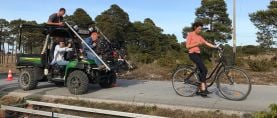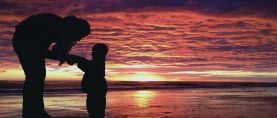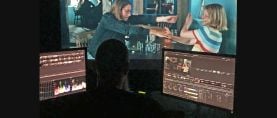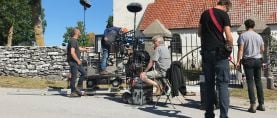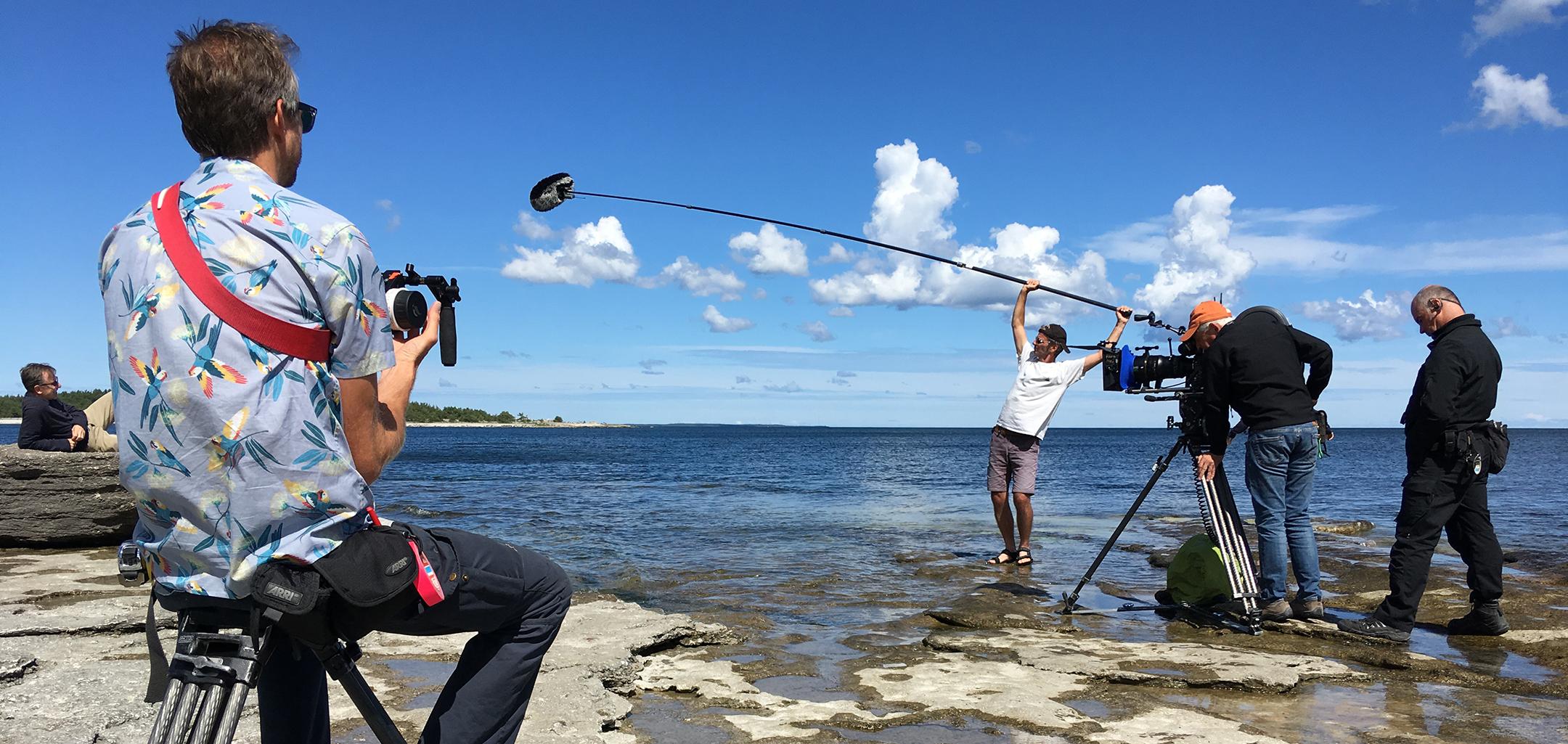
Bergman Island Journal — Part VIII
The cinematographer’s updates on the making of this unique project set on Fårö, the Swedish island where Ingmar Bergman shot four features, lived, died and is buried.
Production images courtesy of the author
Editor’s note: This production diary will unfold over the following days in multiple parts (starting here), while a more formal interview with the cinematographer can be found here.
Week 1
Monday, June 17
To avoid a 90-minute drive at dawn as well as the stress of being afraid to miss the ferry, the production had booked us rooms in two Visby hotels.
First shot of this B.I. Part II: a little track forward in the center aisle of our rental plane. Narrow tracks, I am seated on an apple box wearing my totally new Ergorig. This is a device I received an email about a month ago, and immediately decided I had to get! Very simple concept: some kind of jacket, actually mostly a belt, on which rests a metal construction with a padded platform for the camera. All the weight of the camera therefore is on the hips, not on the shoulder, and subsequently not on the spine. Not totally different from dear Easyrig, but without the ridiculous and dangerous crane above the head. And also I feel more free with the camera.
Tim finds that his character, as written by Mia, is too intellectual, so in this scene, the first of the movie, he was supposed to read a book while Chris, panicked by the turbulence, leaned into him. Instead, he refused to open or read the book. But Mia being Mia, she had us film an insert of the book on the lap of a stand-in. She might not edit it but at least she has it, good for her. For this looking down (above the shoulder) shot I regret not having my Easyrig, because it felt as if the camera was sliding forward, which is totally normal but annoying. In the future, I will have to carry both.
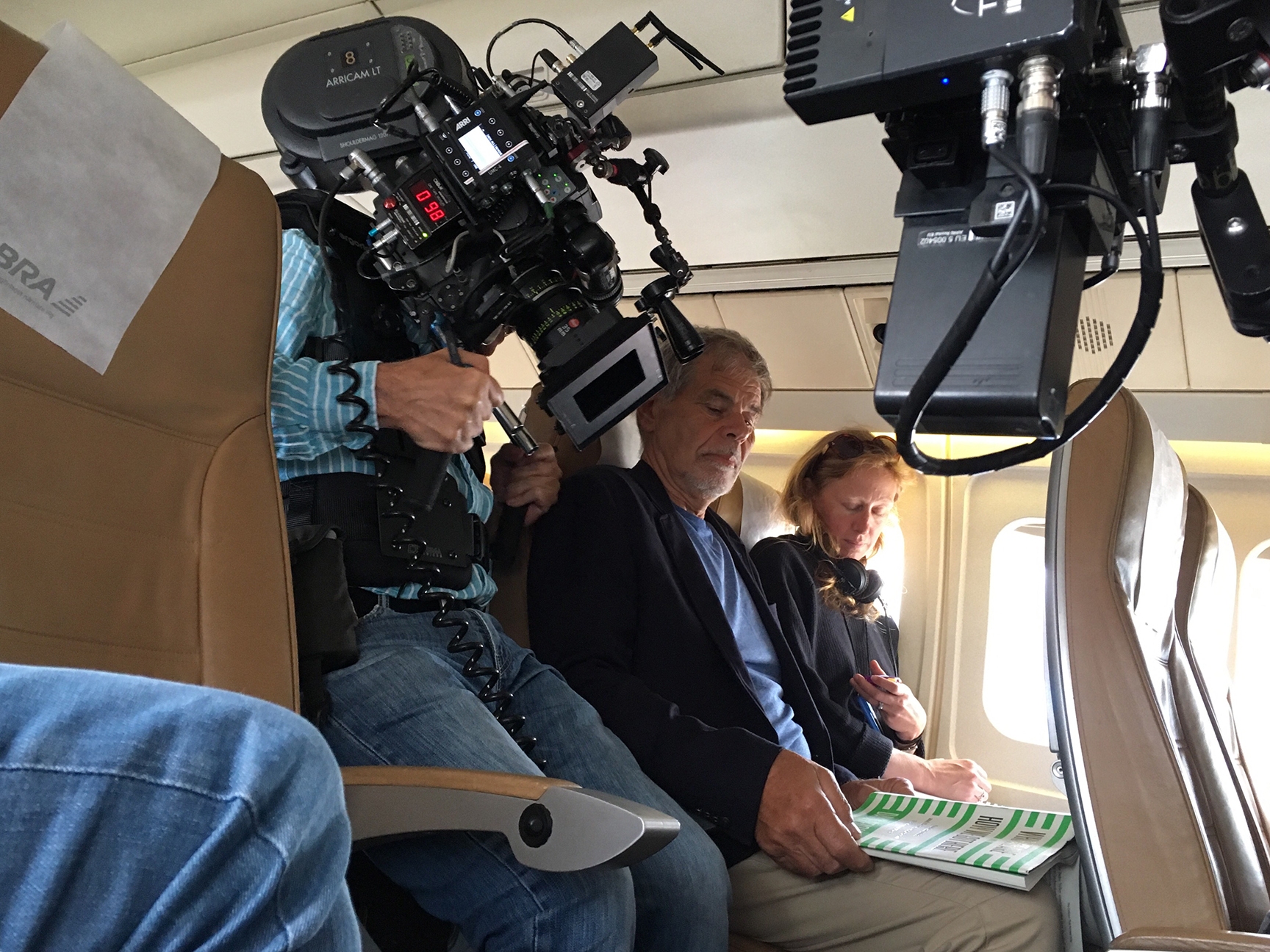
After trying a few not very convincing methods to create the effect of turbulence in the plane, we decide to just try crazy shaking, not tilting or panning, just shaking my two hands as if I was using a jackhammer. It’s very, very convincing, but now that I am 70, it's going to look like I have Parkinson’s. We also keep the frame slightly wide, so Mia can add some shakes in post if we need to be more convincing.
Tuesday, June 18
Not a very fun day, shooting in and around a car, fighting the contrast and the reflections.
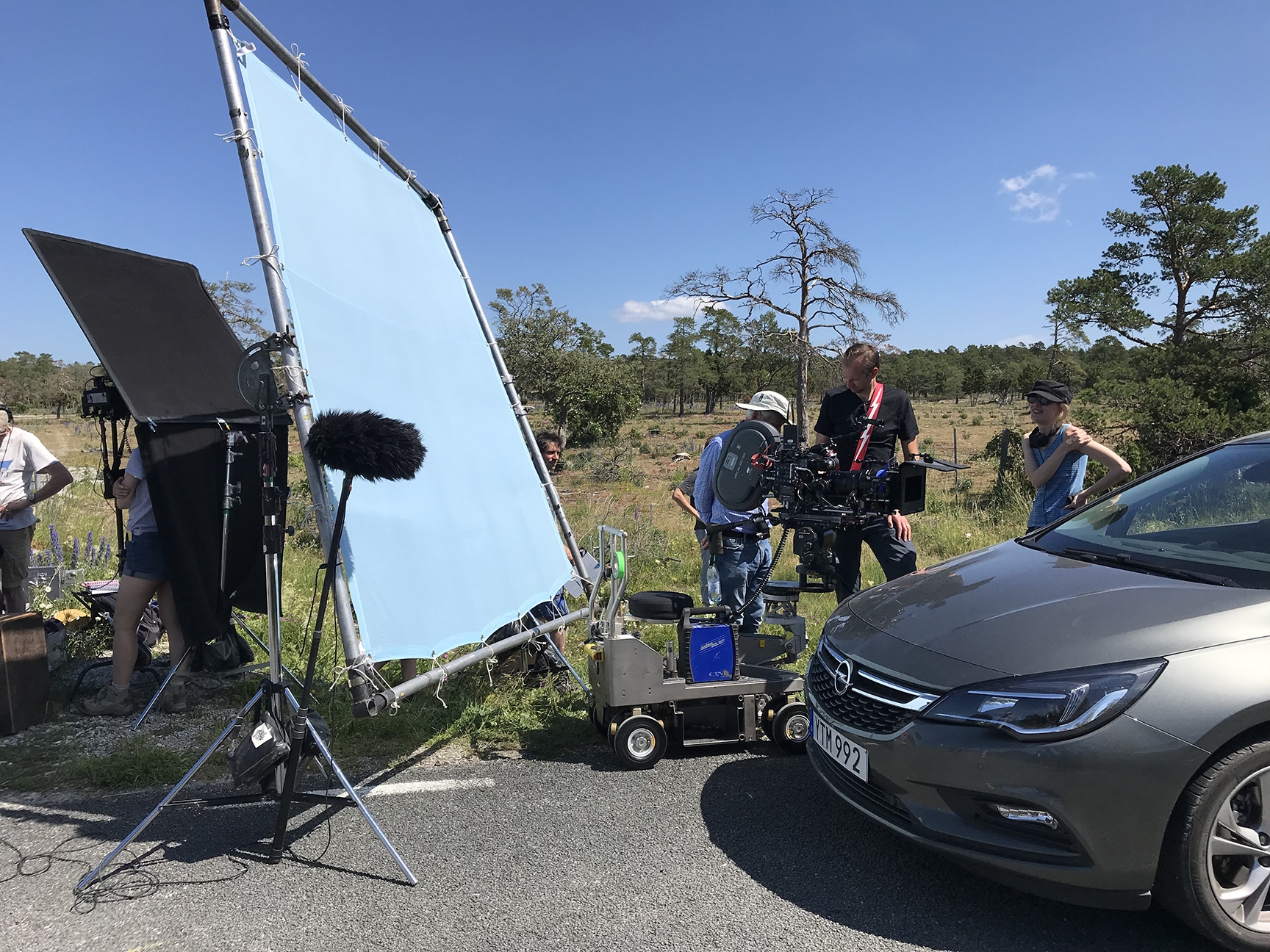
At the end of the day we had a nice camera rig, though, installed on the front of Témoudjine’s pickup truck with a hot head. I am very bad with the wheels, but it will be OK.
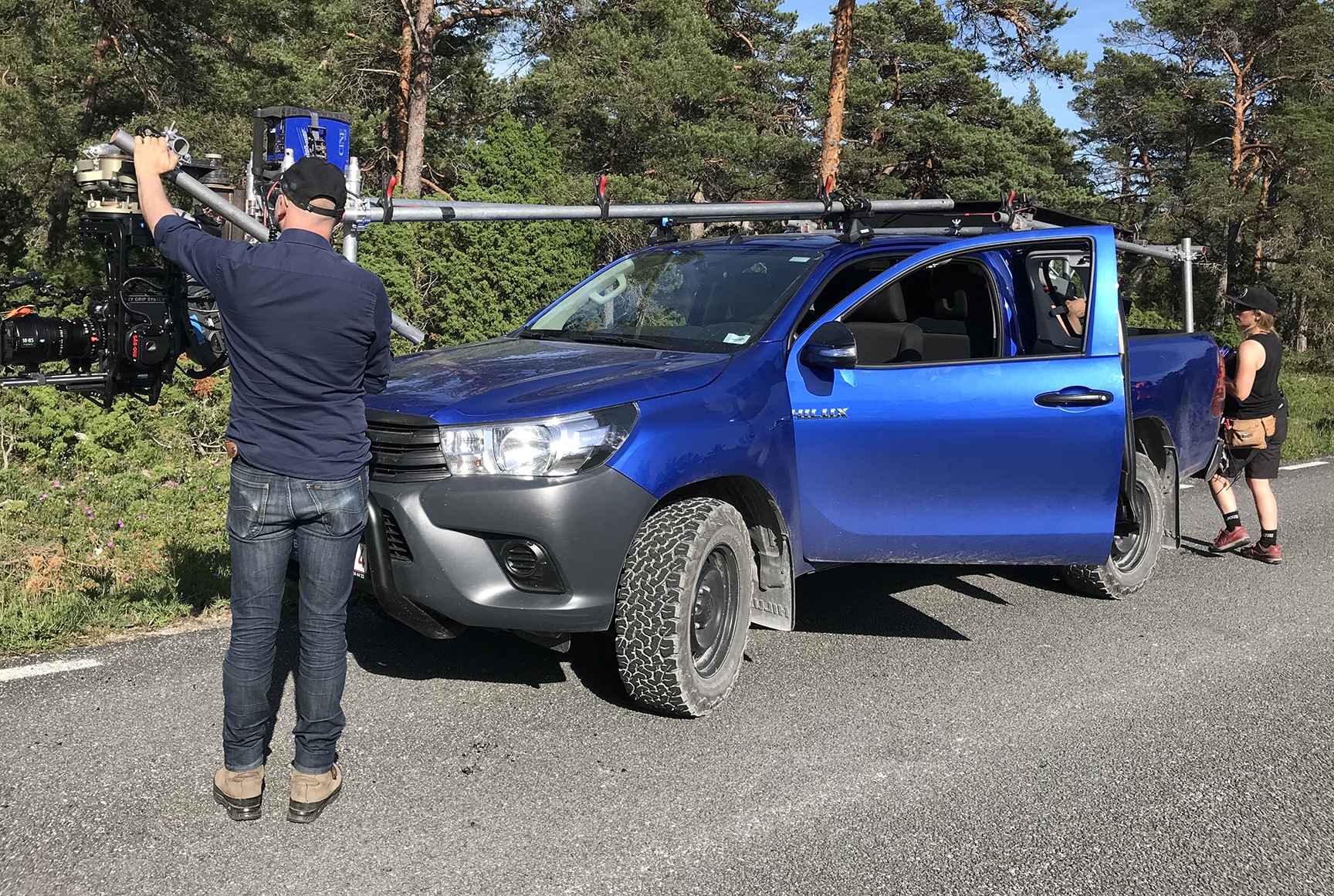
Wednesday, June 19
Woke up at 4:00 a.m. for my daily short run followed by 30 pushups. Very early, but, of course, it is already day! Ferry at 5:36 to cross the sund. This early start is followed by quite a good day. Too many shots while folded in the back of the car and trying to use the slider to get interesting frames, though.
Thursday, June 20
Same early start. Thinking of a Dodger game where I had recently joined the crowd chanting “MVP! MVP!” to Cody Bellinger at the plate, I explain to Témoudjine what this acronym means and honor him with the title of Most Valuable Player. It is true that he is a delight to work with — so inventive, so focused, so fast.
Friday, June 21
What they call Midsummer here is, to a Frenchman, the first day of summer, while midsummer should be mid-August and it is only (only?) the Summer Solstice. Here in Fårö, this gives crazy numbers: sunrise at 3:38 a.m., sunset at 9:50 p.m., 18 hours and 11 minutes of day. The maximum elevation — not that good compared to later in the summer like last year when the light was just beautiful all day long — is 55 degrees. Crazy!
We went inside the Damba House, where suddenly I could ask Dirk for more than one LED inside a car. I start by finally using the Perspex NDs we bought last year. When filming inside, Mia always prefers that the exterior is not blown out. When filming Things To Come I tried to use ND gels — as always a very frustrating experience. So last year, knowing we would spend two weeks in this Damba House, and noting all the windows had the same size, I gave the dimensions to Dirk to explore the possibility of buying Perspex NDs, like the Rosco ones I used in Chicago on a pilot. They are very expensive, but the production agreed to the idea. However, Dirk discovered it would take a while before they could be delivered to the island — too much time. (Of course we didn’t know we would not use them for a year!) But Dirk also remembered that a Belgian DP he knew who was regularly filming Angela Merkel for the BBC noticed that the German Prime Minister had the windows of her Berlin office darkened by a local company, not at all related to the film industry and therefore way cheaper. He tracked it, got samples, tested them (two stops, almost neutral) and ordered what was needed for the house. I therefore darken the exterior, underexpose a bit the interior and it looks quite good.
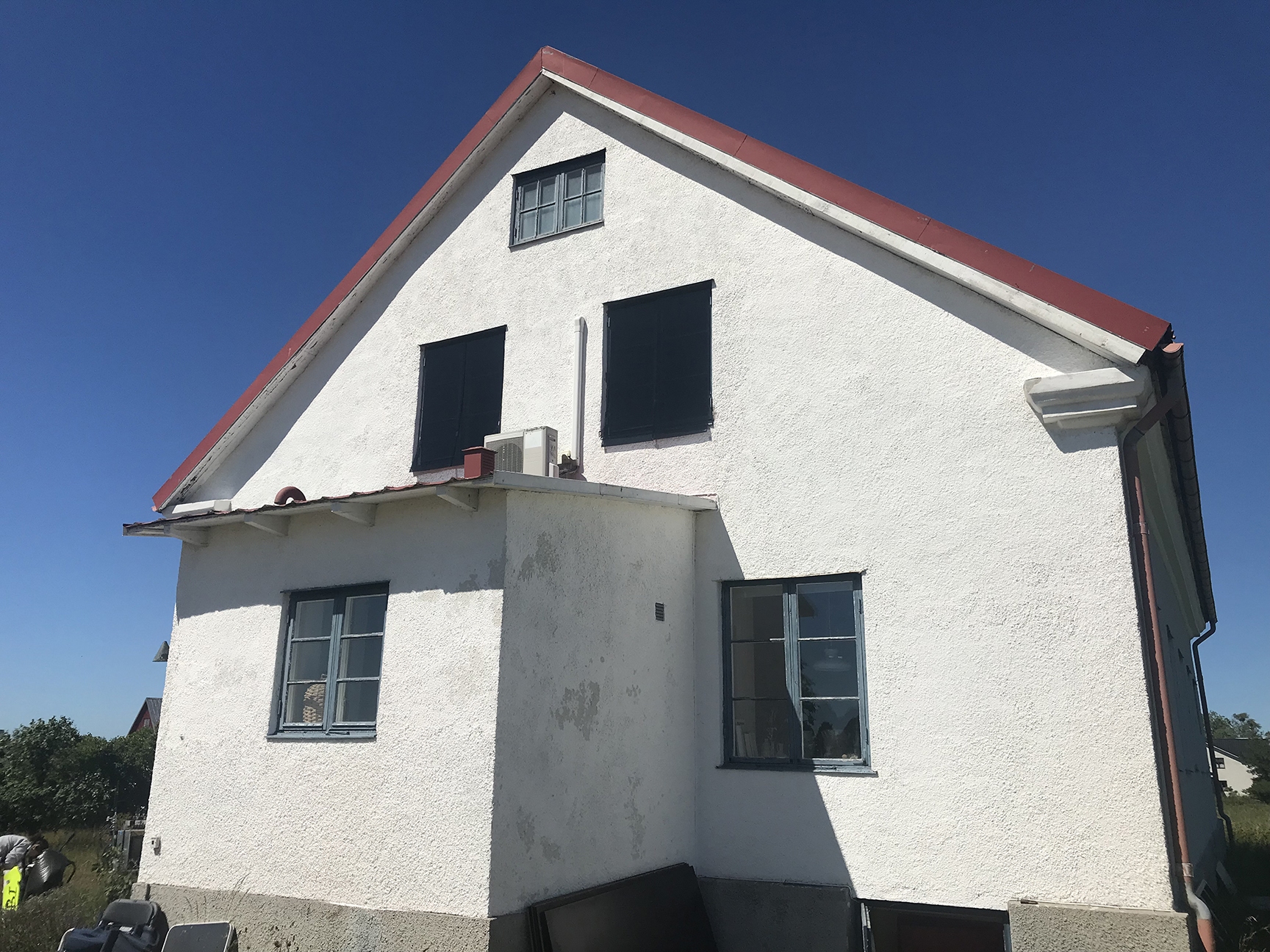
Next to the mill, construction of a rostrum to film Chris writing at her table by the open window on the second floor. Dirk bounces the sun through diffusion to illuminate her face. I insist on cooling down the light by adding ¼ CTB so it doesn’t look like bounced sun — one of my obsessions, as you know by now!
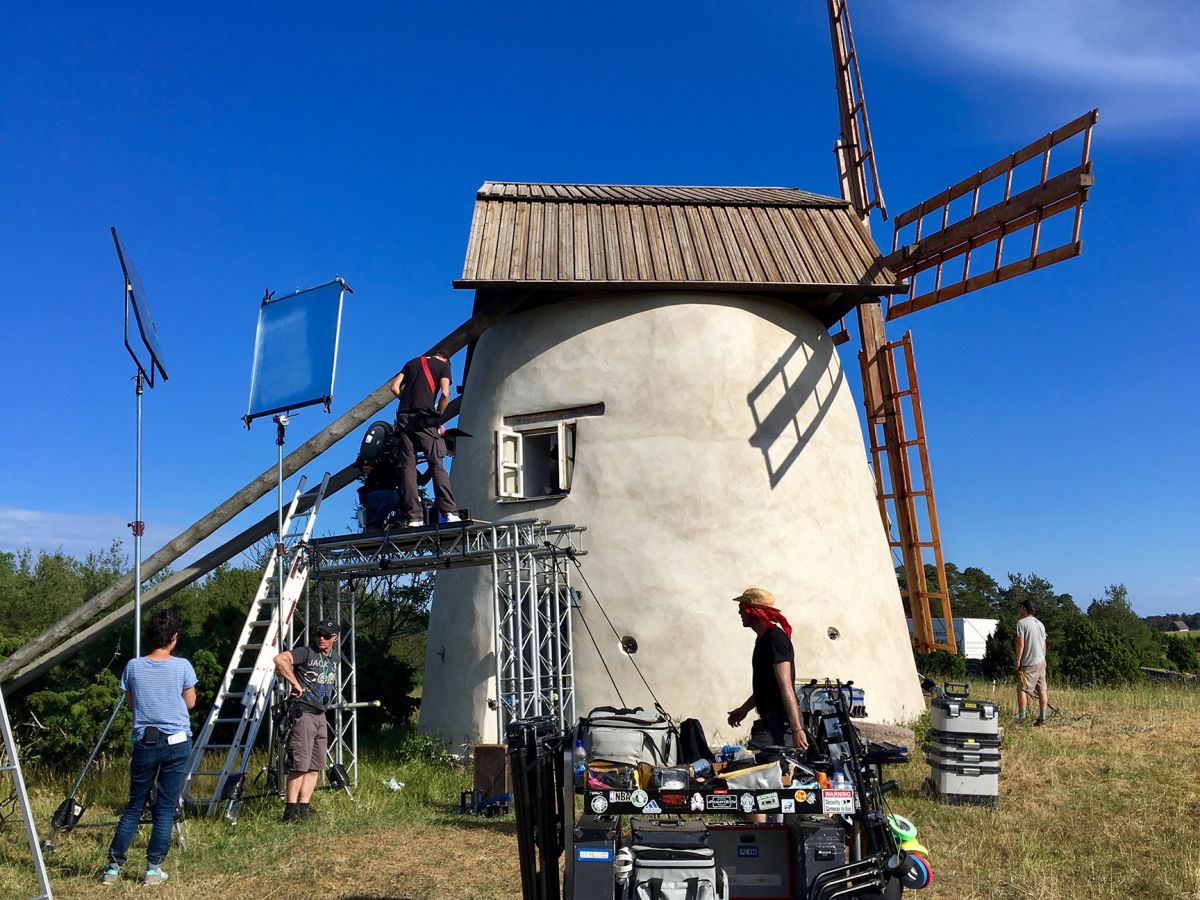
Saturday, June 22
Sixth day of the week; we are all rather tired. A few shots outside in the beautiful morning light, then inside the house. Not blasé yet with the gelled windows; they really make a difference. Also, even though the walls are white, with so many rather small windows creating different levels of lighting, it is never boring. Dirk is at his best, lighting in a very simple manner but, and this is why I love his work so much, with a lot of taste — my taste (!). This is what I like, it always looks extremely natural. To achieve that, I also insist on a lot of rigor when dealing with color temperature; the same source at the same intensity can make the subject look totally fake, “lit,” if in the wrong (different) color and, when in the right temperature, be totally unnoticeable — as if not lit, without being plain and boring.
Week 2
Monday, June 24
At the end of the day, because we are flying, Mia asks us to film something which was planned for tomorrow morning: a long track outside the house where we follow Chris through open doors and windows as she walks across the floor. Already a lighting challenge in the design as she is outside at the beginning of the shot; I had planned to film that in the morning, when the house is backlit. But now, in the afternoon, the sunlit white walls are flaring back at the camera and it seems to be beyond the film stock’s usable dynamic. I tell Mia we will have to film it again first thing tomorrow but still try a few takes like that, just in case!
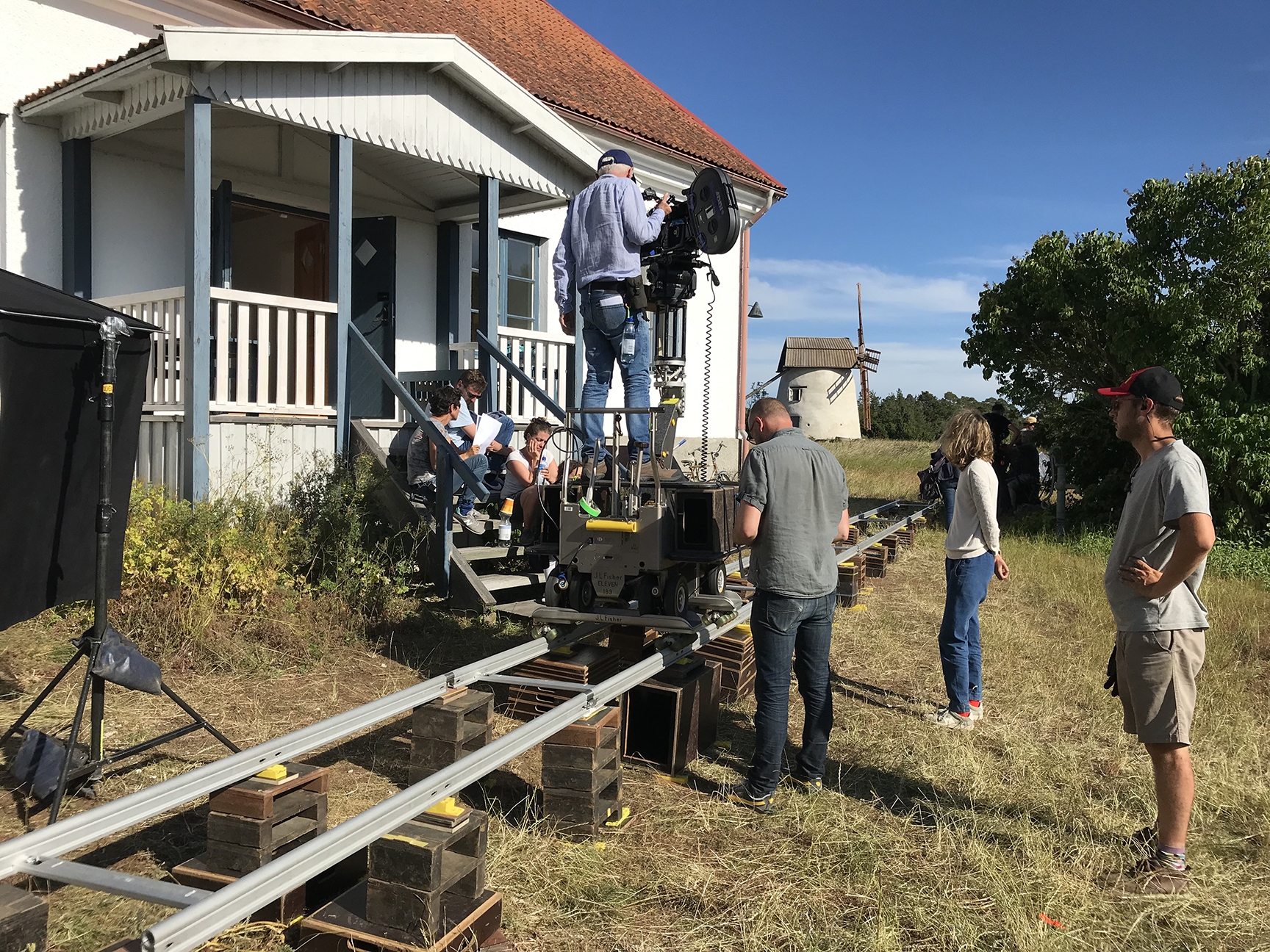
Tuesday, June 25
As planned, we (re)shoot the previous afternoon’s track from outside the house, this time with the sun behind the house. Obviously a safer bet, and, at the beginning of the shot, when Chris comes from the mill, I like the lighting better. At the same time, I have doubts: only the best possible color timing on both versions will tell us which is best. It is a day without Tim Roth and both Mia and Vicky are more relaxed. At the end of the day, we try to shoot a close-up of a sheep on a road, a shot intended to complement something we filmed last year. I shoot it all at 48 fps, so if there are by chance a few moments which look OK, they will last a bit longer.
Wednesday, June 26
A day off, but in the afternoon I join Mia and Marie at Damba cinema to see how the projectionist loads the film in the projector and operates the whole thing. When entering the école de la rue de Vaugirard (now Louis Lumière) in 1971, we all had to learn how to do it — long forgotten — and the old projectionist who was teaching us gave us all one or two 70mm images from Lawrence of Arabia. I cherished mine and carried it in my wallet for several decades until one day, I gave it to a young person, as a special gift when entering the film career. A mistake, and I regret it now. (If you still have it and read this, maybe you could send it back to me!)
(Addendum: My wife read these lines, proofing my English, and told me she is the one who has it!)
Thursday, June 27, Friday, June 28
Two days of filming the Bergman Safari — a lot of wind, a lot of sun, a lot of contrast, a lot of tracks, one in the center aisle of a bus so narrow I had to be behind the camera and operating from a little monitor. It was along a rough road; I was fearing we would be like a loose cannon, but it went OK.
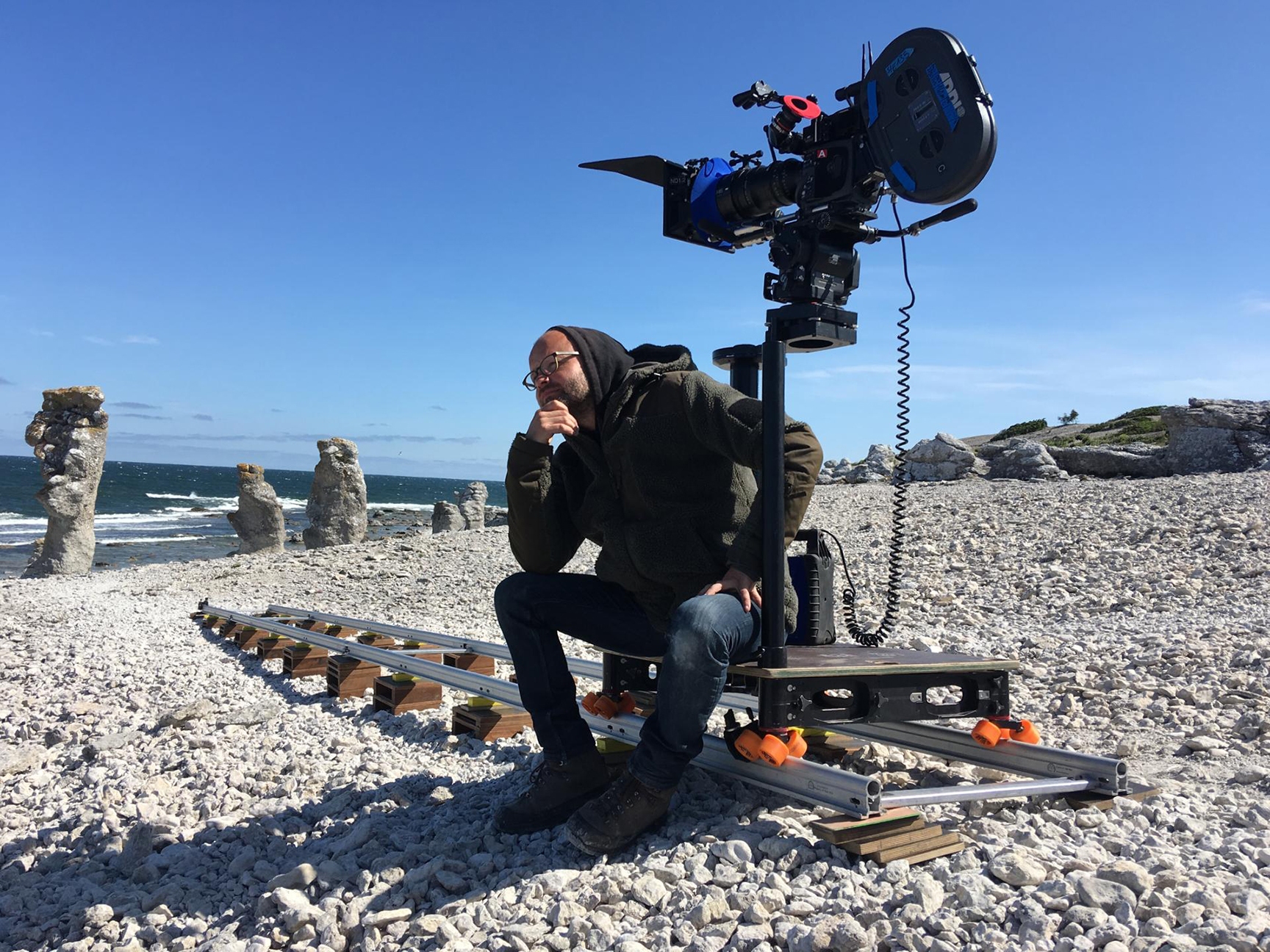
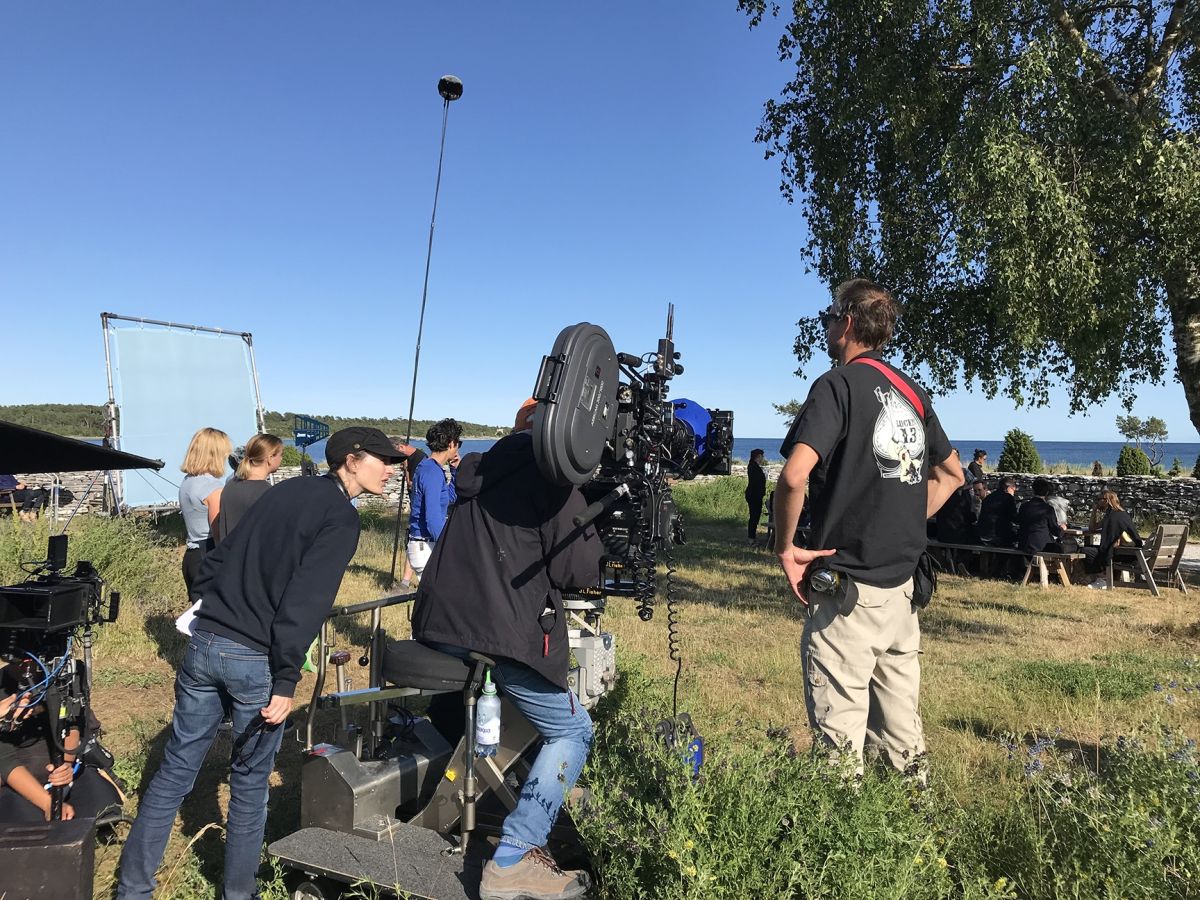
Week 3
Monday, July 1
Walk and talk, 105 meters (344 feet) of tracks in all, in several segments. All of them but two on our dear Fisher 11 and two of them, cleverly designed by Mia on a narrow track with each of the two actors walking on each side, one shot on one, the reverse from the same track, but the beauty of it is that the narrow track allows the actors to really walk side-by-side.
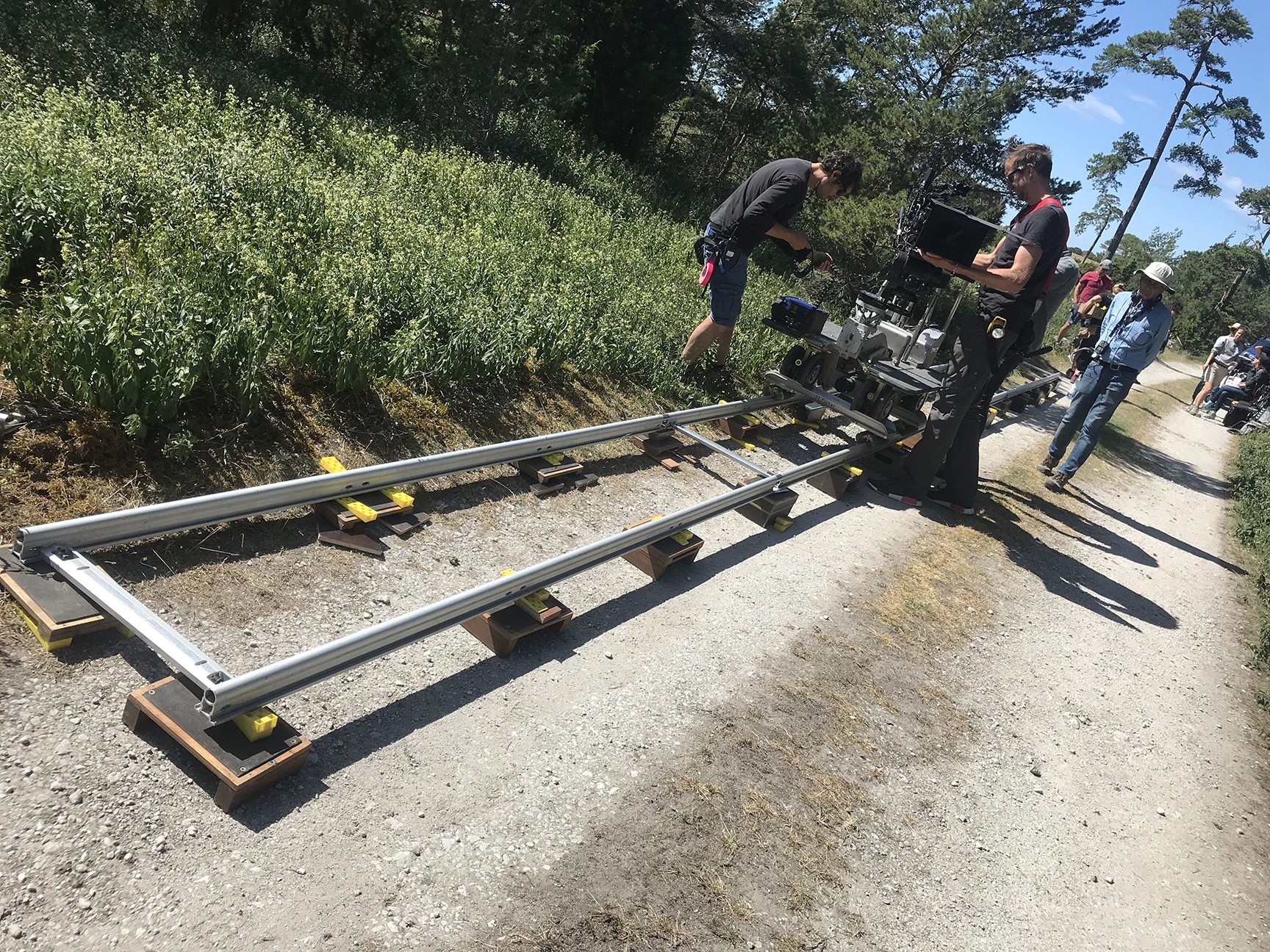
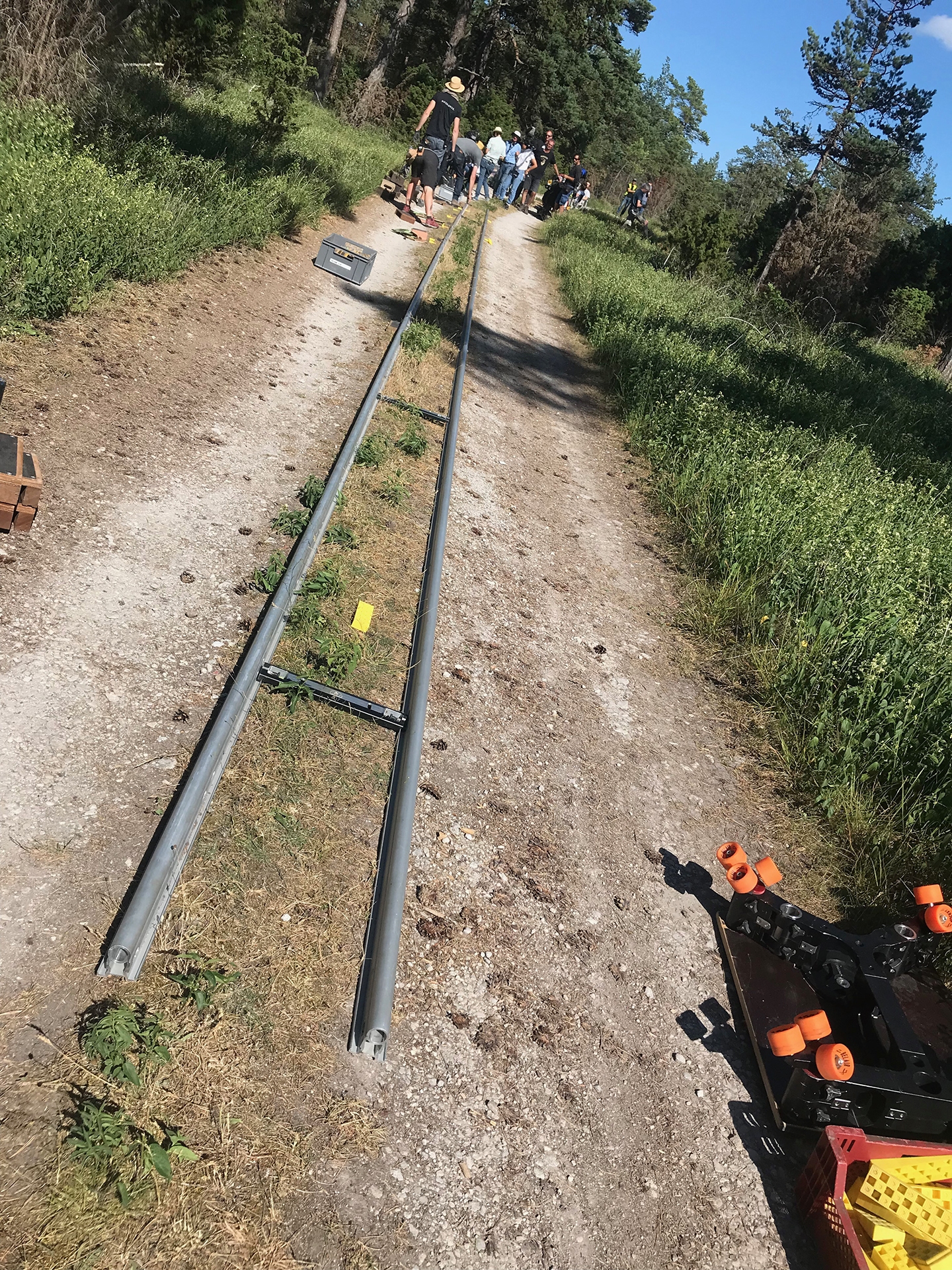
Tuesday, July 2
So much rain that we decide to change the schedule of the day and start with some retakes from last year which Mia wants to do because last year there was no rain in a scene where she wanted it and because the SFX company asked for it. These retakes were originally scheduled for next week, with some rain pipes on cherry pickers to help, but real pouring rain is better and cheaper. Except that at call time it is still raining but not enough. We wait for half an hour and leave, back to the planned schedule. It takes us to Damba house, Tony writing at his desk, and Chris visiting him. Night scene following in the bedroom where Dirk and my work looks very natural but not particularly interesting. (How much I hate not filming digital and having to light for exposure!) White walls though.
We end the night with a quick test, Alice, the 3rd AC, seated in front of a half-white, half-black background, one half of her face at key, the other one minus three stops. We shoot it twice on two different reels, as I want to shoot the film which Tony is screening during his master class (just a few shots of course) skipping the bleach. I’m trying to learn through this test if all the black which will be left in the neg by this treatment will make me want to change the way I expose when we film the scene. I used this process before, on Clubbed to Death (1996) in Portugal. At some point I was kind of a specialist at using skip bleach — on the print, on the neg, on the interpositive! But I don’t remember the practical aspect of it.
Wednesday, July 3
Chris in the crazy cold water, Tony watching her from a rock. The opposite was written, him in the sea, her outside, but Tim refused to go. Lovely weather and colors.
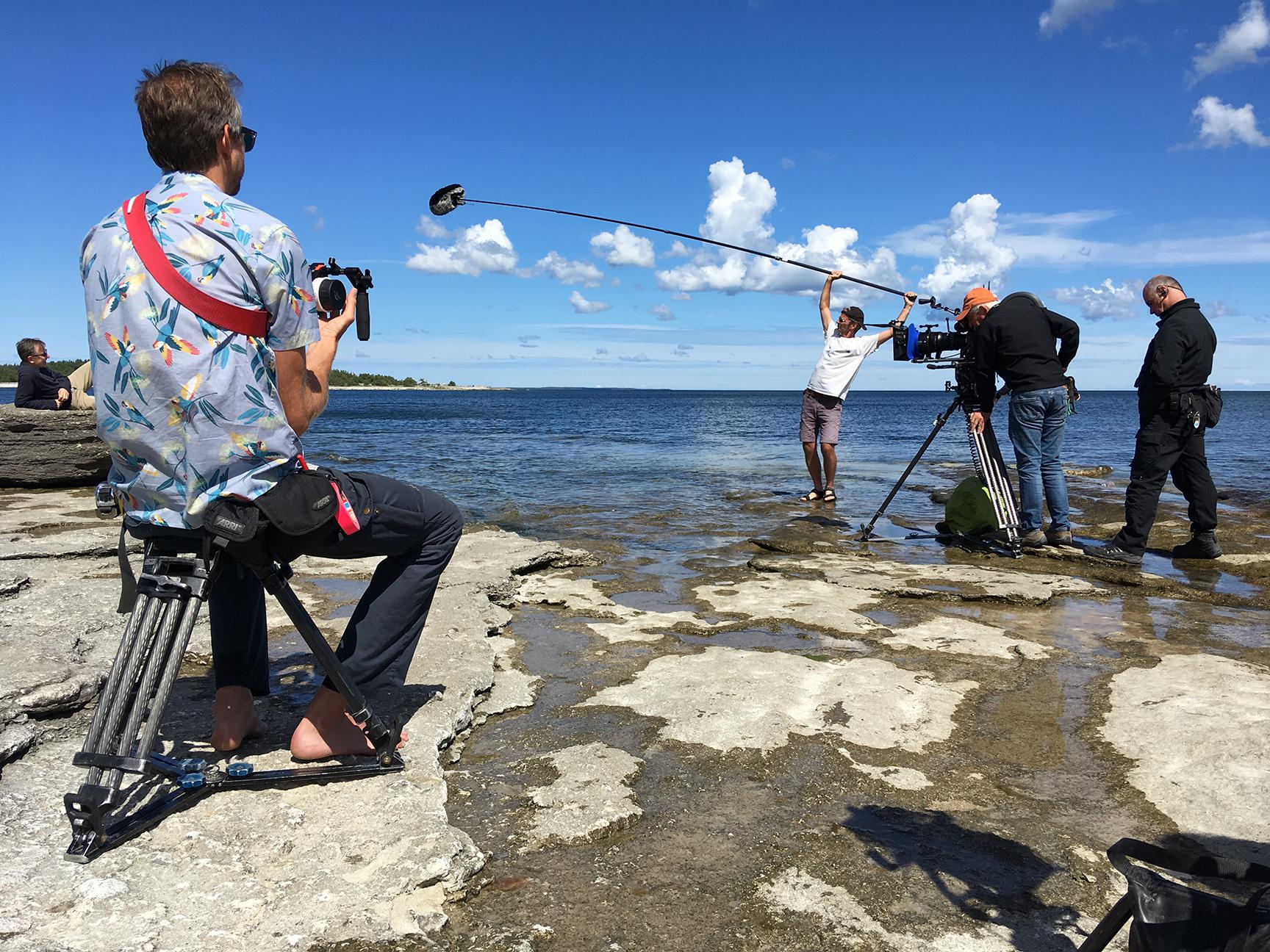

After some low-sun exterior moments, we go into a dawn scene, five characters at a table in a restaurant terrace. Luckily the sun is hidden behind clouds so we can start filming sooner. I had planned to do so anyway, filtering the sun rays through a quarter blue grid cloth, but I don’t need that. Except for one moment when the sun comes out and obviously my personal blue grid, which is only 2 by 3 meters would not have been enough, we use instead a 6 by 6 white. Trying, of course, to keep some consistency throughout the shots, I start with an ND 1.2 so I keep the stop around T2. And, as usual, the last take of the last shot is filmed at 1.4 and underexposed one stop!
To be continued in Part IX. Catch up with Part VII here.
A more formal interview with the cinematographer can be found here.

